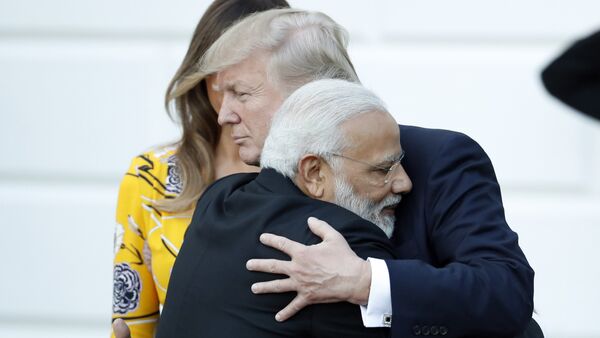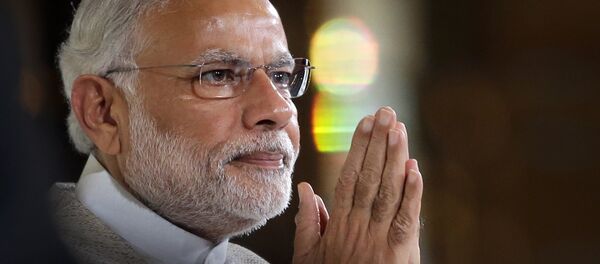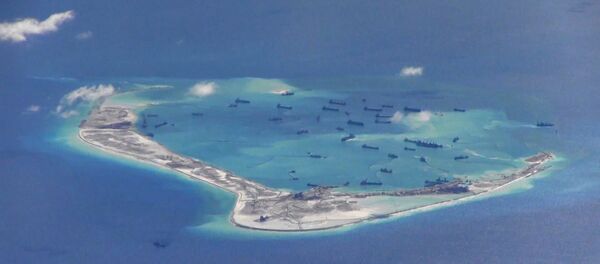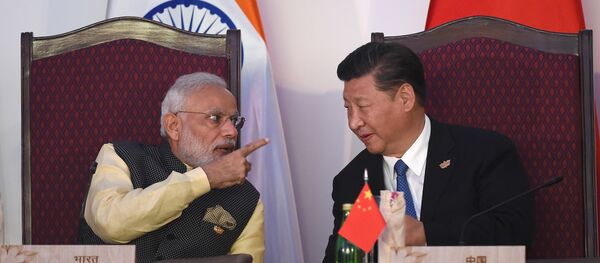Chinese Foreign Ministry Spokesman Geng Shuang said Indian guards "obstructed normal activities" by Chinese forces on the border, and called on India to withdraw immediately.
He urged India to respect China’s territorial integrity, adding that such incidents pose a "serious threat" to peace and stability in border areas.
Commentators noted that this was the first incident of the kind since Chinese President Xi Jinping and Modi exchanged visits in 2014 and 2015. After three years of stability, currently there is a new surge in bilateral tensions.
According to Sergei Kamenev, an expert at the Institute for Oriental Studies at the Russian Academy of Sciences, suggested that the coincidence between Modi’s visit to the US and the border incident is possibly not accidental.
"I don’t think that his priority goal was to play the Chinese card. Of course, developing relations with the US comes first. The second goal is to win support for India’s relations with Pakistan. Relations with China come third. Delhi wanted to gain Washington’s support in its standoff with China in Asia, especially in South Asia. In particular, the US will deliver 22 naval drones to India. They will be used for gathering intelligence over the Indian Ocean," Kamenev told Sputnik China.
Commenting on those two different statements, Kamenev suggested that Washington and Delhi criticized not only Pakistan, but also China.
"Of course, that was a blow to China. But I’d like to point to the fact that the US moderated India’s stance towards China. There is no doubt that Delhi wanted to portray Islamabad as a sponsor of terrorism. India has also urged the US to stop providing military assistance to Pakistan. However, the Pentagon is continuing to provide military aid to Islamabad," Kamenev said.
According to military expert Vladimir Evseyev, Trump’s policy towards India is a continuation of the policy run by the administration of his predecessor Barack Obama. In turn, the Indian government also continues its previous policy.
"In this context, the purchase of US drones by the Indian navy is understandable. As for transport aircraft, India could buy them from Russia, but its decision was rather political. India ignored the One Belt One Road forum in Beijing. Tensions between Delhi and China are on the rise. Hence, the largest joint drills involving the US, India and China and the purchase of American weapons," Evseyev said.
At the same time, the expert suggested that all of the above is unlikely to seriously change the regional balance of power.
"But this contributes to deepening China-India tensions and also prompts China and Russia to tighten cooperation. The goal is to prompt India to have a more balanced foreign policy. I don’t think that Washington is able to drive a wedge between Delhi and its partners in BRICS and the Shanghai Cooperation Organization (SCO). At the same time, it is clear that closer cooperation between the US and India will also result in certain tensions within BRICS and the SCO," Evseyev said.
"India should comply with norms of international law. China and India have numerous channels to prevent such incidents. India is China’s largest neighbor and their bilateral relations should not be damaged by such incidents. Beijing stands for developing cooperation with Delhi. Moreover, China is against US attempts to drive a wedge between Beijing and Delhi," Shen said.






